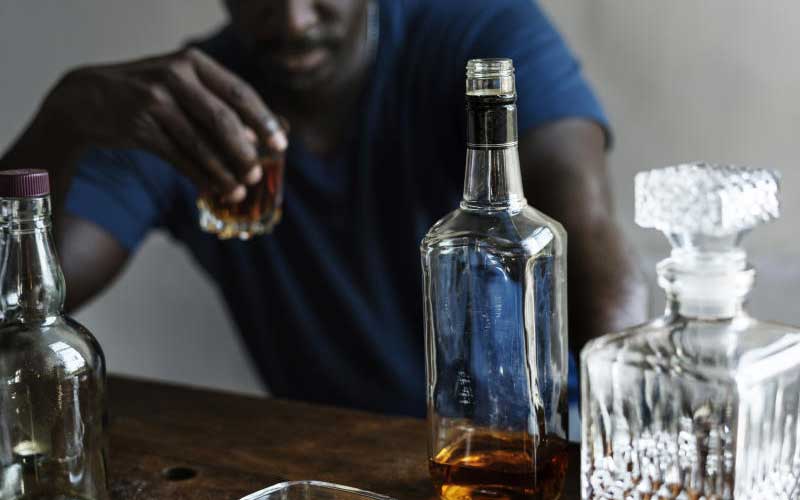
Even as the Finance Bill 2019 continues being paraded back and forth between Parliament and the presidency because of the contention on the interest rate cap law, it is clear that the decision to increase excise duty on alcohol by 21 per cent is not in contention.
This obviously means that immediately the presidency and Parliament reach a consensus, the law will take effect and the additional tax will be levied on alcohol.
Like has been with previous such increments, bar owners have a tendency to immediately pass the extra cost to the end consumer by increasing alcohol prices—even on old stock—on the account of the increase in taxation.
This need not necessarily be the case this time around.
Why? One might be tempted to ask.
The answer lies in how alcohol retailers handle their retail chain supply—wholesaler and on distribution costs, tricks to reduce management costs while modifying their marketing strategy to reposition their outlets to fit into the ‘quality service at almost recommended retail prices’ mantra.
This is why.
Before alcohol hits a patron’s table it passes through the manufacturer, the wholesaler, the distributor and finally the bar outlet—the retailer.
Any bar owner would like to reduce the supply chain costs. This might mean shopping for cheaper suppliers or changing tactics to pick products directly from source. It might mean reducing rental and labour costs by renegotiating the rental agreements especially right around now when the property market is correcting itself. In fact, it might even mean moving to a new location. Loyal patrons always go after the service. It might mean that a bar owner employs less but more efficient workers.
On marketing, technology is now key driver on how products and services are driven. Instead of full blown promotions, why not use WhatsApp or other applications to communicate to your clients on latest offers? It is cheaper and more convenient than having a number of ladies lined up at the entrance of an outlet.
For alcohol suppliers, one may want to influence the distributors to move more of their products as opposed to those of competition. To do so, one can put on incentive contests, do promotions with them, or even go on store visits with the sales representatives.
As an alcohol distributor, one definitely wants to focus extra energy on big, volume-driving retail accounts.
The end consumer’s drive to buy is only determined by the quality of the product—which in most cases has been marketed through and through by the manufacturer and how fairly priced the product is—which is again hinted at by the manufacturer through a Recommended Retail Price (RRP) tag.
Unfair pricing does the whole chain an injustice and can only be addressed by pricing closest to the recommended retail price.
Stay informed. Subscribe to our newsletter
In the end, unfair pricing by bar owners often see the bar owners and the well-meaning manufacturers out of business in the process denying the eager customer their favourite drink.
Above the RRP, a retailer needs to know some basic mathematics to survive.
Restaurants sell alcohol by the bottle for consumption on the premises. Liquor stores sell unopened bottles for consumption off-premises. The economic environments in which both establishments operate are different, as is the pricing policy.
Bars typically mark up their drinks much more than liquor stores—the margin by which is free in Kenya. This why a patron will go to one outlet and find prices different from another outlet that is just across the streets. Restaurants also have a ‘pour cost’ room compared to stores. A pour cost is all those things that include free drink promotions to ensure higher sales of the anchor brand.
Other factors affecting a drink markup in bars include free drinks and theft.
While bars do not often get much volume discount bars have one advantage—those that sell bottled beer have almost zero costs save for serving (especially of the beer is not for re-use). Establishments selling canned beer at recommended retail prices have the highest advantage.
This is followed by outlets that do draft beer, then fancy beer then wine and finally hard liquor. Liquor has thin margins because the consumers tend to get drunk on a lower volume and wine, draft and fancy beer has the additional cost of fancy glasses. In fact, hard liquor are mostly the highest priced in some of these establishments.
It is, therefore, important that every bar owners knows which class they want to be. But one thing is clear—those who do none- recyclable beer bottles or canned beer gain a lot as they reduce most of the expenses associated with recyclable beer bottles.
In the near future we might as well see liquor stores that are also bars as an attempt to keep prices of alcohol down even with the rising taxation and other costs.
Bar owners who control to a minimum their supply chains costs while maximumly marketing their products and services as quality and at or near recommended retail price will reap big. The others will go under. It is already happening.
The general rule remains: As along as an establishment is well marketed and is known for quality—the closer they sell at the recommended retail prices, the higher the volumes they push.
Ms Nyaboke is a market researcher and a writer. [email protected]
 The Standard Group Plc is a
multi-media organization with investments in media platforms spanning newspaper
print operations, television, radio broadcasting, digital and online services. The
Standard Group is recognized as a leading multi-media house in Kenya with a key
influence in matters of national and international interest.
The Standard Group Plc is a
multi-media organization with investments in media platforms spanning newspaper
print operations, television, radio broadcasting, digital and online services. The
Standard Group is recognized as a leading multi-media house in Kenya with a key
influence in matters of national and international interest.
 The Standard Group Plc is a
multi-media organization with investments in media platforms spanning newspaper
print operations, television, radio broadcasting, digital and online services. The
Standard Group is recognized as a leading multi-media house in Kenya with a key
influence in matters of national and international interest.
The Standard Group Plc is a
multi-media organization with investments in media platforms spanning newspaper
print operations, television, radio broadcasting, digital and online services. The
Standard Group is recognized as a leading multi-media house in Kenya with a key
influence in matters of national and international interest.










